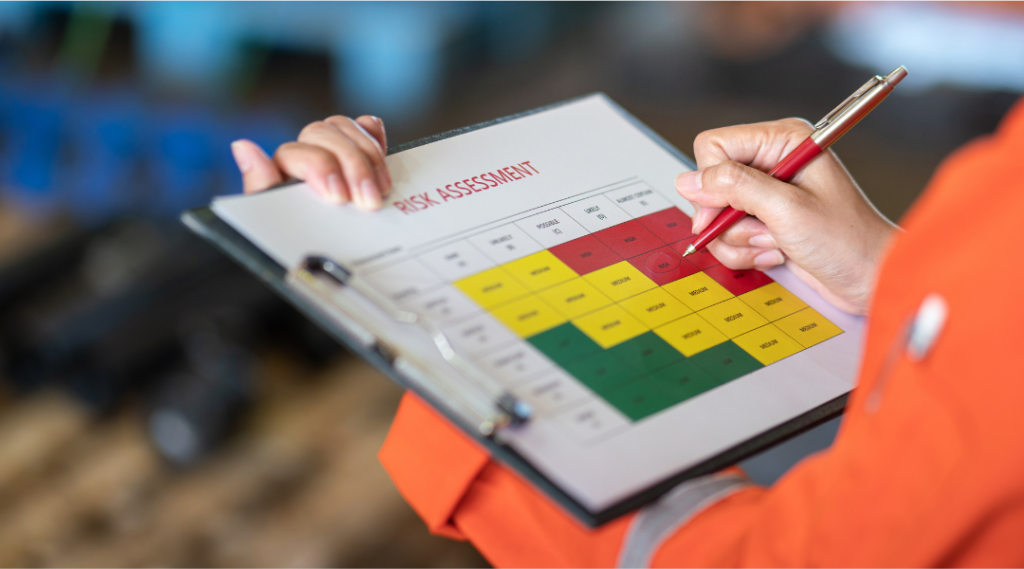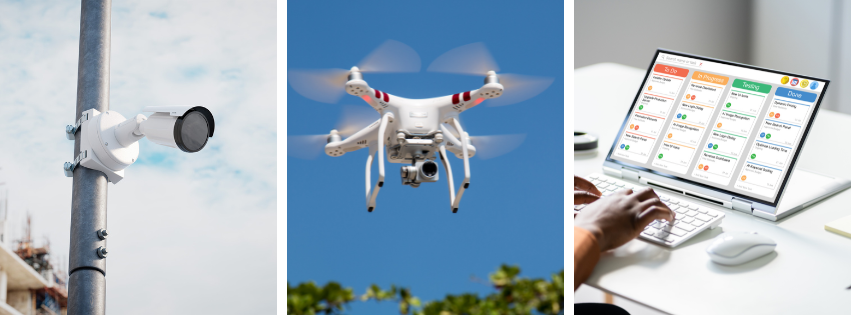Picture this: you’ve crafted the perfect project plan. It’s well-scoped with realistic timelines and accurate-as-can-be budgets. You’ve thought through every detail, from compliance and permitting to resource allocation and a solid risk management plan. Your plan is airtight… and yet you can’t shake the feeling that it’s missing something. You may need a contingency plan for the cost of potential incidents – but what is a contingency plan and how can you put a dollar amount on the unknown?

If you’ve felt this way at the outset of a project, it’s for good reason. More often than not, construction projects don’t go as planned. An estimated 30% of all construction projects, and 80% of all large-scale construction projects, fail according to industry standards, exceeding planned costs and durations by 20%.
Enter the contingency plan. Contingency plans are about minimizing risk and planning for the things you can’t plan for. They play a critical role in protecting your project against all the things that ultimately lead to delays and cost overruns like labor shortages, emergencies, and damage incidents.
In the following blog, we’ll discuss different types of contingency plans, how to set them, and why they’re critical for fortifying your project plan.
What Is a Contingency Plan in Construction?
In construction, a contingency plan is an action plan set to navigate potential future incidents. It typically consists of two components, a plan and an amount of money that is set aside for any extra costs that arise throughout the project. These plans play a critical role in managing risk and protecting your project from unexpected changes in scope, resource shortages, and more. Project managers will typically set aside 5-10% of their budget as a contingency, but this percentage can vary from project to project depending on cash flow needs.
There are three main types of construction contingency plans:
- Contractor contingency plans, where the builder sets aside funds at the outset of a project to cover extra costs that arise during construction. The builder will often include these funds in the initial budget as fixed costs.
- Owner contingency, where the project owner is responsible for taking on any extra costs that result from owner-initiated changes to the scope of work.
- Design contingency, where the owner is responsible for added costs that arise during the design phase of a project due to any changes in scope or unpredicted design requirements.
How to Create a Construction Contingency Plan
Creating a construction contingency plan is an important part of your project planning process. It requires comprehensively identifying and assessing potential risks, establishing plans to address those risks, and allocating the necessary resources to execute those plans. Here are the steps.

Step 1: Identify Potential Risks
The first step in creating a solid construction contingency plan is to conduct a risk assessment. Gather historical data and solicit expert consultations to create a list of potential risks that you may encounter throughout the entirety of the project.
Step 2: Evaluate and Prioritize Risks
Next, evaluate each of the risks you’ve identified for the likelihood it occurs and its potential impact. You’ll want to prioritize planning for the risks that are more likely to occur or result in a large financial burden.
Step 3: Develop Response Strategies
After identifying your most significant risks, it’s time to develop response strategies. For each risk, walk through the steps you would take to address it. This exercise will help you better understand the resources and budget required to manage the incident effectively.
Step 4: Allocate Resources
Resource allocation is the next critical step in construction contingency planning. Make sure you allocate the appropriate emergency and financial resources you need to address each of your potential risks. This step is one of the most important for accurately identifying how much budget you need to set aside for your contingency plan.
Step 5: Reevaluate Your Plan
Construction plans inevitably change over the course of a project. Reevaluating your plan throughout your project is critical for ensuring it remains relevant and useful. Make sure to reevaluate your risks and response strategies, especially in the event of a change in scope.
4 Strategies to Minimize Risks
While construction contingency plans are essential for handling the unexpected, the best strategy is to reduce the likelihood that you’ll need to rely on them. Project managers have several tools and practices at their disposal to proactively mitigate risks and keep projects on track. Here are three key strategies:
1. Regular Monitoring and Adjustments
Continuous monitoring of the project’s progress helps catch potential issues early. Project management software and tools like construction cameras provide real-time insights into the jobsite, allowing you to spot delays, safety concerns, or other risks before they escalate. By making adjustments as needed, you can steer the project back on course without resorting to contingency measures.
2. Resource and Schedule Flexibility
Building some flexibility into your schedule and resource allocation can act as a buffer against unforeseen challenges. For example, having backup suppliers or alternate materials can help avoid delays due to supply chain issues. Similarly, scheduling key tasks with some time cushions allows for adjustments without derailing the entire project.
3. Preventative Maintenance and Safety Protocols
Regular construction safety maintenance is key when planning a construction project. Regular maintenance of equipment and adherence to strict safety protocols can prevent accidents, breakdowns, and delays that could otherwise require contingency funds. Keeping your jobsite safe and well-maintained minimizes the risk of costly incidents that disrupt progress.
4. Utilizing Technology
Technology, such as construction cameras, drones, and project management software, offers real-time data and insights that help you stay on top of the project’s status. These tools can alert you to potential issues before they become serious, allowing you to take corrective action promptly.

Start building your contingency plan today and take your project plan from great to perfect.

